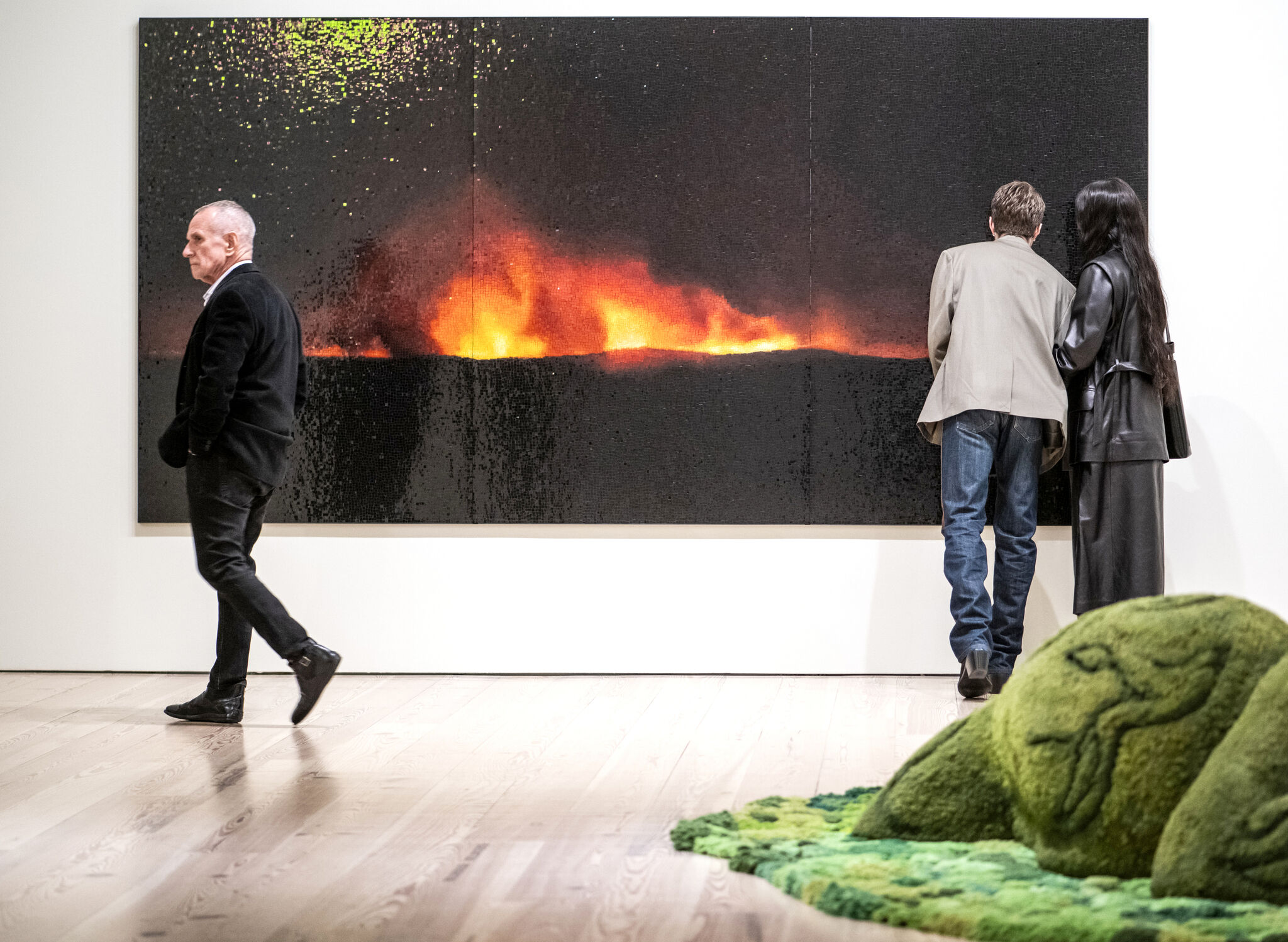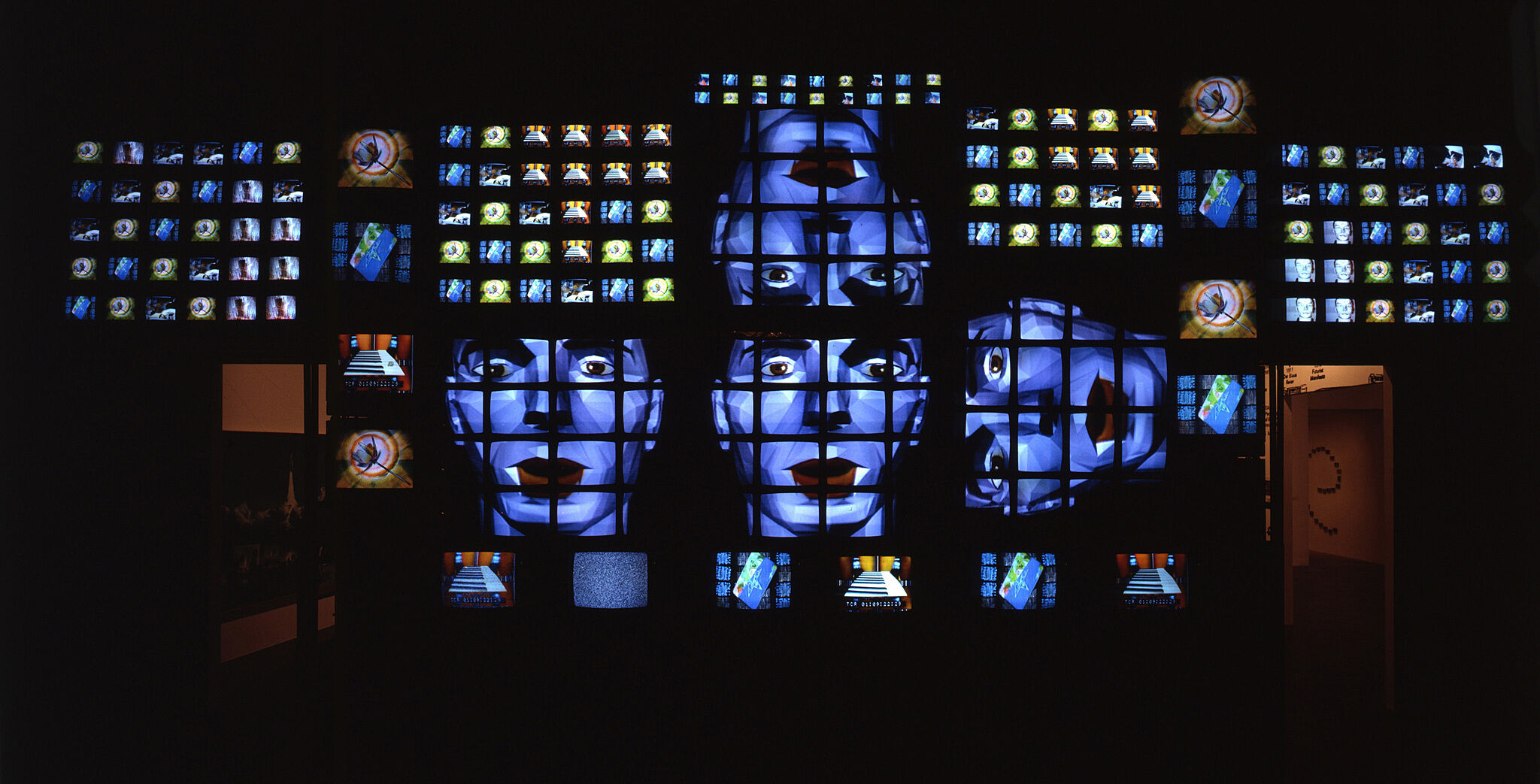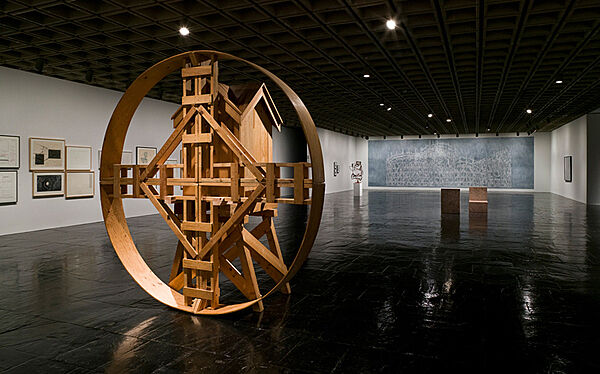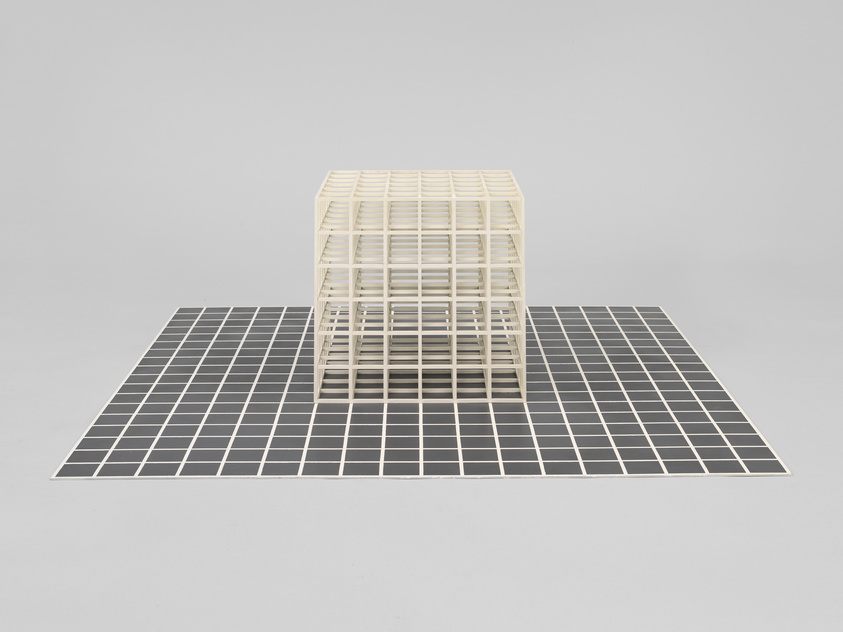Agnes Denes
1931–
Agnes Denes was among the earliest voices to assert the obligation of artists to address global concerns, ecological ones in particular. Since 1968 she has created site-specific projects that double as acts of environmental remediation. Denes’s actions of reforestation, biodiversification, and eco-intervention have included planting a rice field on a contaminated site near the Niagara Gorge; sowing and harvesting a two-acre wheat field over a landfill in lower Manhattan; and making a “tree mountain” of 11,000 firs in Finland, planted by 11,000 volunteers who were given certificates granting them stewardship of the trees.
Isometric Systems in Isotropic Space— Map Projections: The Snail is one in a series of drawings Denes began in 1973 that project images of Earth onto such forms as a pyramid, dodecahedron, cube, egg, lemon, and snail (or nautilus) shell. Unaided by a computer, Denes painstakingly rendered the landmasses, distorting them so that they correspond to their proper longitudinal and latitudinal coordinates. But while mathematically correct and aligned with cartographic conventions, The Snail is equally absurd and—with its seeping washes of watercolor and elegant composition— lyrical. Refashioning the image of our planet as a logarithmic spiral, Denes’s unorthodox cartography suggests an alternative conception of humanity’s place in the universe—as if a new global consciousness calls for a new globe. As she wrote in 1976: “Map Projections creates sculptural form in celestial space and presents analytical propositions in visual form. It is a tantalizing game if one learns to read between coordinates and doesn’t mind making sport of the human predicament.”
Introduction
Agnes Denes (Dénes Ágnes; born 1931 in Budapest) is a Hungarian-born American conceptual artist based in New York. She is known for works in a wide range of media—from poetry and philosophical writings to extremely detailed drawings, sculptures, and iconic land art works, such as Wheatfield — A Confrontation (1982), a two-acre field of wheat in downtown Manhattan, commissioned by the Public Art Fund, and Tree Mountain—A Living Time Capsule (1992–96) in Ylöjärvi, Finland. Her work Rice/Tree/Burial with Time Capsule (1968–79) is recognized as one of the earliest examples of ecological art. She lives and works in New York City.
Wikidata identifier
Q394503
Information from Wikipedia, made available under the Creative Commons Attribution-ShareAlike License . Accessed December 23, 2025.





